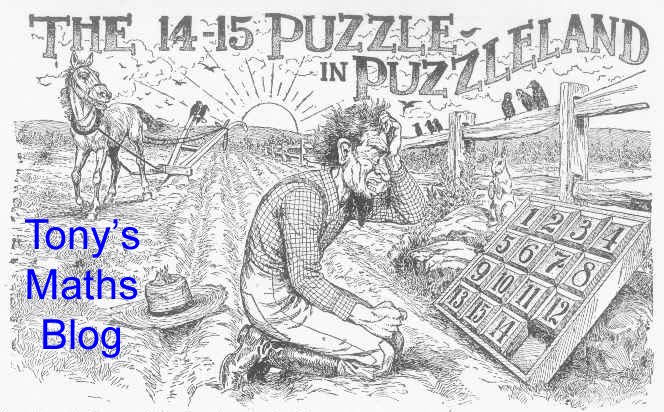I'm nervous about selecting highlights, because almost everything was a highlight, and my list inevitably leaves out many excellent talks. There is a list of all the talks on the MathsJam website but here are some I particularly remember (in the order in which they were presented):
- Simon's 3D-printed robot which solves Rubik's cube (time-lapse video shown here with Simon's permission);
- Matt on logical deduction games, which brought back memories of playing Eleusis when I was a student and introduced others I need to find out about;
- Noel-Ann on data and how to it can be represented (and misrepresented);
- Zoe's poem about e, which (understandably) seems to be on everybody's highlight list;
- Matthew's amazing recreation of a problem from Captain Scarlet about the bongs of Big Ben;
- Andrew's paradoxical balloon monkey, which although made from a single balloon, has an underlying graph which is not semi-Eulerian;
- Angela's poem;
- Rachel on spinning yarn;
- Alison on illogical units, and Dave on illogical scales;
- Will on non-binary cellular automata;
- Miles finding striking similarities between mountaineering and mathematics;
- Glen showing how many holes a constructed object (equivalent to a T-shirt) possessed (most of MathsJam seem to have got it wrong, going for four rather than three!);
- Sue on Ada Lovelace;
- Paolo using a pack of cards to find two numbers from their sum and difference;
And of course the "extra-curricular" puzzles, games and magic, Tiago showing me how to tie a knot with one hand, and the spectacular mathematical cakes.
So once more a memorable MathsJam, with an excellent range of speakers and talks, friendly atmosphere and fascinating and surprising mathematics. The organisers once again did an amazing job!
